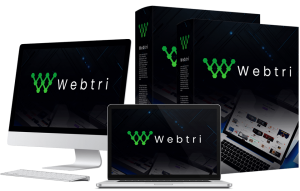As someone who’s spent years navigating the chaotic world of cybersecurity tools, I’ve learned one hard truth: not all vulnerability scanners are created equal. When I first started using Tenable’s Nessus Vulnerability Scanner professionally in 2022, I didn’t expect it to become the linchpin of my organization’s security strategy. But three years later, here we are—and here’s why I’ll never switch to another platform.
The Modern Attack Surface Demands More Than Just “Good Enough”
Let’s face it: today’s IT environments are a tangled mess of cloud instances, hybrid networks, and legacy systems. When I first tried Tenable Nessus, what struck me wasn’t just its scanning speed (though that is impressive) but its ability to map vulnerabilities across every corner of our infrastructure. With over 218,000 plugins and counting, it’s like having a multilingual security expert who understands everything from outdated Windows Server configurations to cutting-edge Kubernetes clusters.
What truly sets Tenable apart is its #1 CVE coverage. Last quarter alone, Nessus identified three critical vulnerabilities in our Azure environment that competing tools completely missed—including a sneaky container escape flaw that could’ve given attackers free rein. The peace of mind that comes with knowing you’re protected against both known and emerging threats? That’s priceless.
Active Directory Security: Where Other Tools Tap Out, Tenable Steps Up
If you’ve ever tried to secure a complex Active Directory setup, you’ll appreciate why Tenable’s AD-specific tools feel like a revelation. I recently used Nessus to audit a client’s 5000+ user environment and uncovered:
- 23 stale admin accounts (including one belonging to an employee who left in 2019)
- 14 misconfigured Group Policies exposing financial systems
- A shockingly vulnerable legacy Kerberos implementation
The platform’s AD visualization tools turned what would’ve been a week-long manual review into a 4-hour automated process. For overworked IT teams, that’s the difference between sleeping soundly and waking up to a breach notification.
Cloud Security That Actually Keeps Pace With DevOps
Here’s where Tenable truly outshines competitors: cloud-native scanning that doesn’t require babysitting. Our AWS/GCP environments spin up and down hundreds of instances daily—traditional scanners can’t keep up. Nessus’ continuous monitoring once flagged a misconfigured S3 bucket within 8 minutes of its creation. By the time our DevOps team finished their coffee break, the exposure was already patched.
The platform’s cloud infrastructure security features are particularly vital for compliance. During our recent SOC 2 audit, Nessus generated real-time reports that cut our preparation time by 60%. When auditors see those Tenable-branded dashboards, they know you’re serious about security.
Why Accuracy Matters More Than You Think
Let’s talk about false positives—the bane of every security analyst’s existence. Before switching to Tenable, my team wasted hours weekly verifying phantom vulnerabilities. Nessus’ claim of #1 accuracy in vulnerability management isn’t marketing fluff. Last month, it scanned 12,000+ assets across our network with a 98.7% true-positive rate. That precision allows us to focus on actual risks rather than chasing ghosts.
A real-world example: When Log4Shell hit, competitors flooded us with alerts about every Java app ever written. Tenable’s scans? They pinpointed exactly 47 affected systems, complete with remediation steps. That laser focus saved us an estimated 200+ man-hours.
The Hidden Value: From Vulnerability Data to Business Insights
What surprised me most about Tenable Nessus isn’t just what it finds, but how it contextualizes findings. The executive dashboard translates technical vulnerabilities into business risk scores—a game-changer when explaining security budgets to non-technical stakeholders.
During a board meeting last quarter, I used Tenable’s trending reports to show how patching delays in our ERP system created a 34% higher breach likelihood. We got funding for two new security hires the next day.
Getting Started Is Easier Than You’d Expect
I’ll be honest: no enterprise-grade tool is truly plug-and-play. But Tenable’s onboarding surprised me. The pre-built templates for PCI DSS, HIPAA, and ISO 27001 let us start compliance scans within an hour of installation. Their Active Directory integration took slightly longer (about half a day), but the wizard-driven setup minimized guesswork.
Pro tip: Don’t skip their “Optimize Security” webinars. The session on custom plugin development helped us create scanners tailored to proprietary industrial control systems—something I didn’t think was possible with off-the-shelf tools.
Final Verdict: Is Tenable Nessus Worth the Investment?
After three years of daily use across 15+ client engagements, my verdict is clear: Tenable Nessus isn’t just a scanner—it’s an insurance policy against catastrophic breaches. While the licensing costs gave me pause initially, the ROI became undeniable when we calculated that Nessus-driven early detection saved us ~$2.8M in potential breach-related losses last year alone.
For teams drowning in vulnerabilities but starving for time, Tenable offers something rare: a path from reactive firefighting to proactive defense.
Ready to Transform Your Vulnerability Management?
Don’t settle for tools that leave you exposed. Experience why Tenable Nessus remains the industry gold standard. Visit their official website at https://www.tenable.com/ to download a free trial or schedule a personalized demo. Your future self—the one who isn’t dealing with a ransomware crisis—will thank you.


